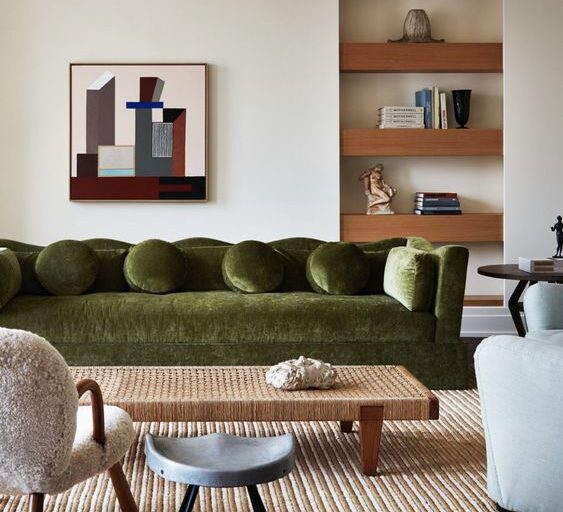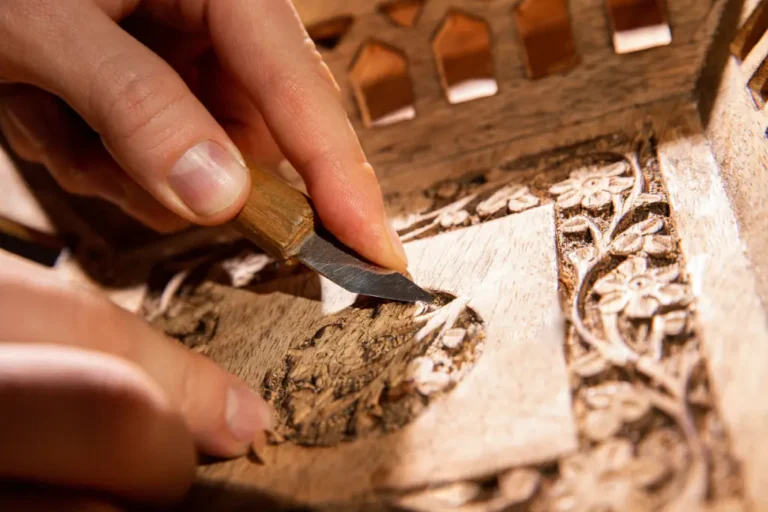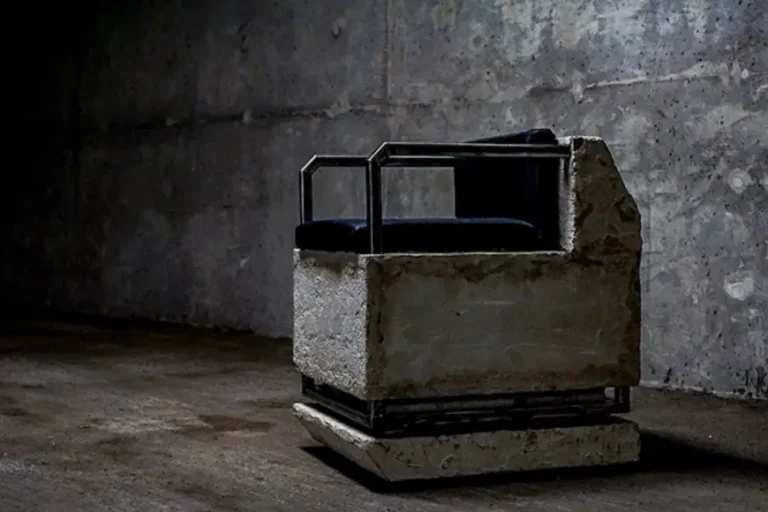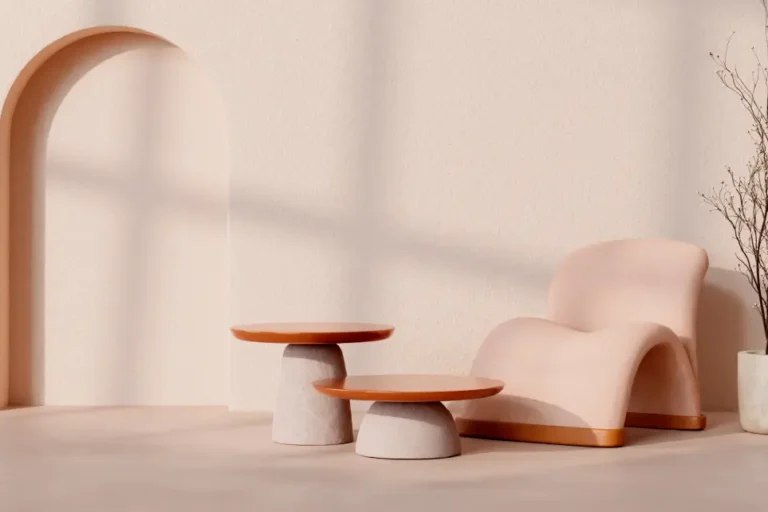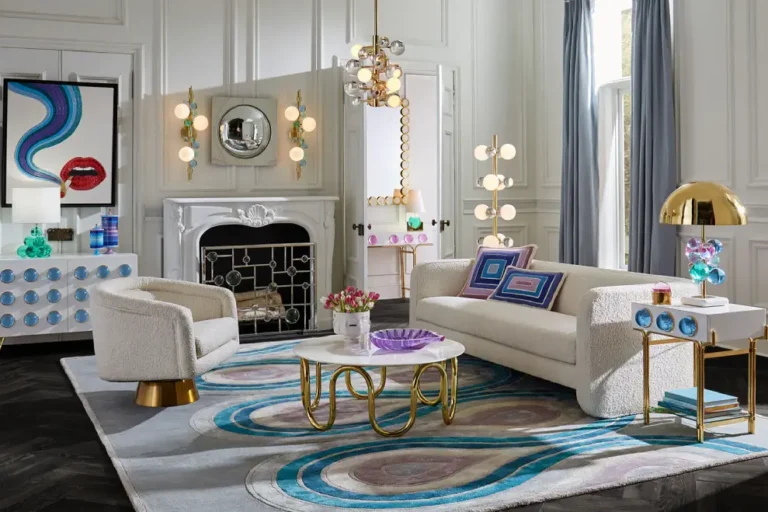Explore the timeless allure and lasting impact of Midcentury Modern style: from its origins to its enduring influence on design and architecture.
Midcentury Modern style, often referred to simply as “Midcentury,” is a design aesthetic that emerged in the post-World War II era, flourishing from the 1940s through the 1960s. Its impact, however, extends far beyond its original period, continuing to influence contemporary design and architecture. In this comprehensive exploration, we delve into the origins, characteristic elements, interior design principles, architectural innovations, and lasting legacy of Midcentury Modern style.
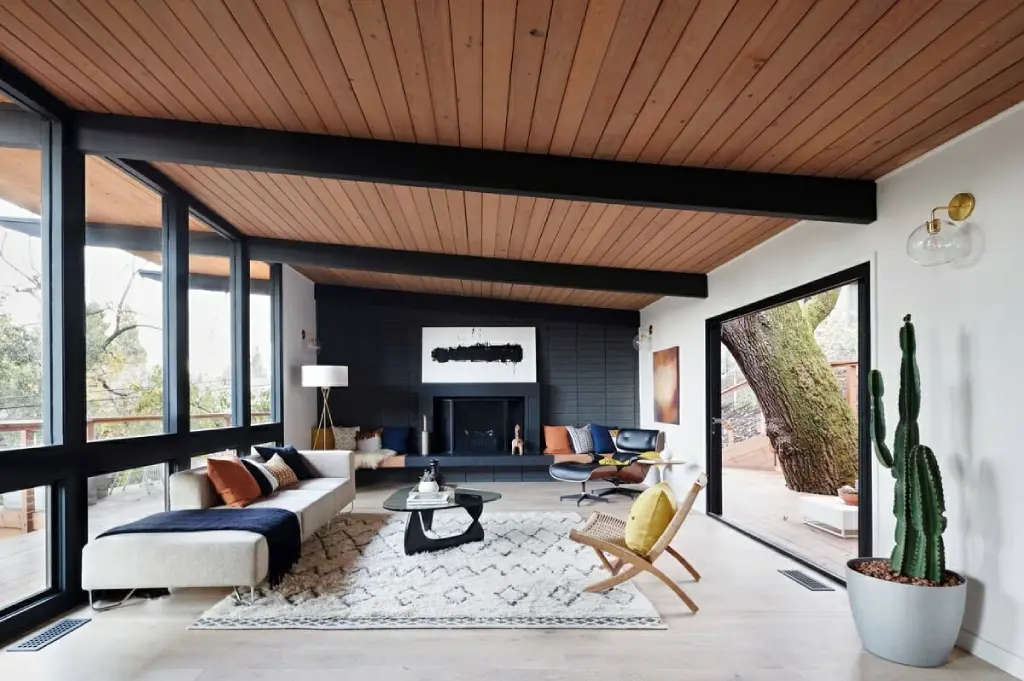
Origins and Historical Context
The origins of this style can be traced back to the post-war period, characterized by a unique blend of optimism, technological advancement, and a desire for simplicity. Emerging as a response to the opulence and excesses of earlier design movements, the style embraced a minimalist approach that emphasized clean lines, organic forms, and functionality.
During this time, there was a palpable shift in societal values towards a more casual and informal lifestyle. The Baby Boomer generation was coming of age, and there was a growing emphasis on family life and domestic comfort. These changing cultural attitudes, coupled with advancements in materials and manufacturing techniques, laid the foundation for the emergence of Midcentury Modern style.
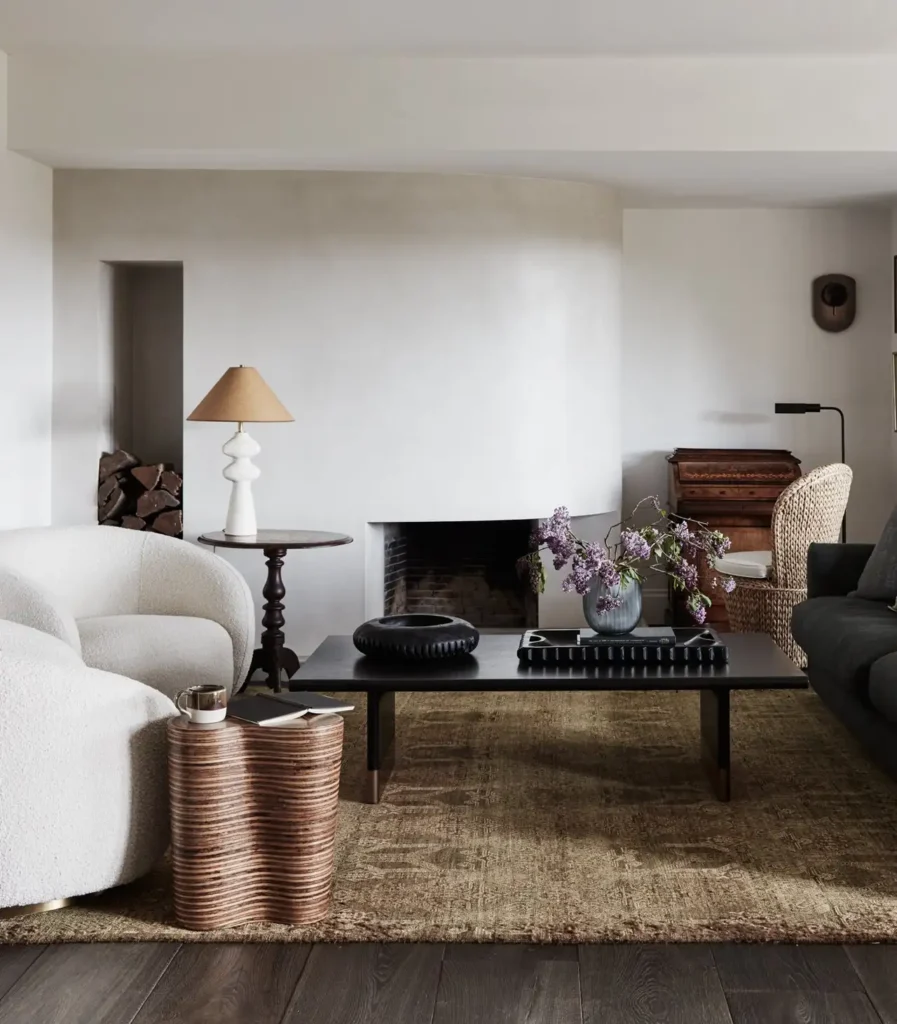
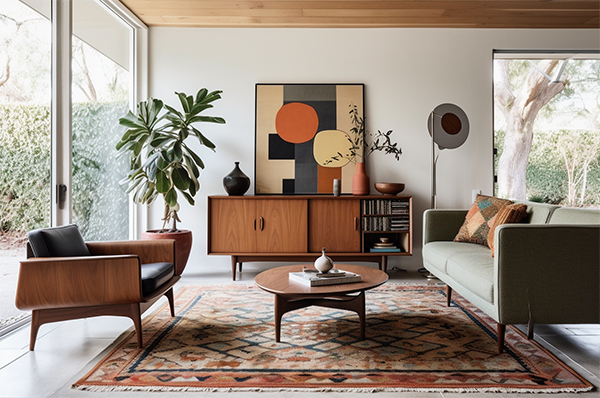
Characteristic Elements
The style is characterized by several distinctive elements that have come to define its aesthetic appeal. Central to its ethos is the principle of simplicity, evident in the clean lines and minimalist forms that define furniture and architectural design. Organic shapes and natural materials such as wood, leather, and stone are frequently utilized to create a sense of warmth and connection to the natural world.
A neutral color palette dominated by shades of beige, brown, and gray serves as a backdrop for the sleek and understated elegance of its interiors. This subdued color scheme allows for the integration of bold accent colors, often in the form of vibrant upholstery or accessories, adding a touch of personality and visual interest to the space.
Functionality is another hallmark of Midcentury Modern design, with an emphasis on practicality and usability. Furniture is often designed with dual purposes in mind, combining form and function seamlessly. This focus on functionality extends to the layout of interior spaces, which are typically open and fluid, facilitating movement and interaction while blurring the boundaries between indoor and outdoor living areas.
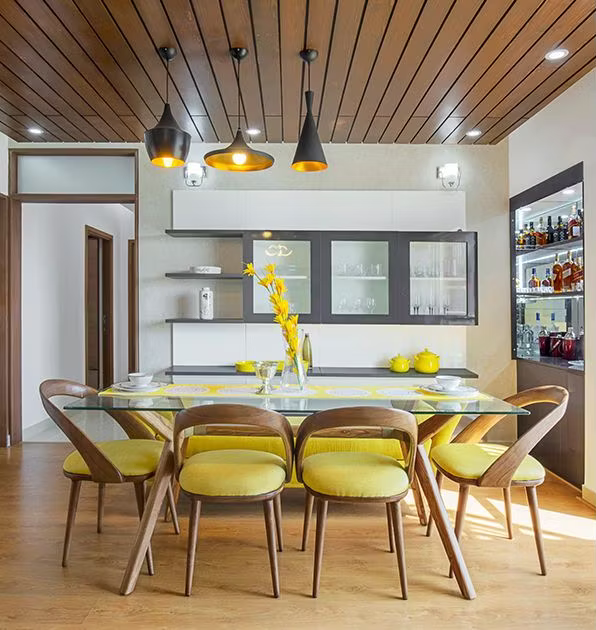

Midcentury Modern Interior Design
The influence of the style on interior design is profound and enduring, shaping the way we inhabit and experience residential and commercial spaces. At the heart of Midcentury Modern interior design is a commitment to creating environments that are both aesthetically pleasing and highly functional.
Iconic Furniture:
Furniture is celebrated for its iconic designs that have stood the test of time. Pieces such as the Eames Lounge chair, designed by Charles and Ray Eames, epitomize the fusion of form and function. With its sleek plywood shell and supple leather upholstery, the Eames Lounge chair remains a symbol of elegance and sophistication.
Similarly, the Noguchi table, designed by Isamu Noguchi, showcases the sculptural beauty and innovative use of materials that are characteristic of design. Its organic form and glass top create a striking visual contrast, while its functional design makes it a versatile addition to any living space.
Open and Functional Spaces:
Midcentury Modern interior design is characterized by its emphasis on open and functional spaces that promote a sense of flow and connectivity. Walls are often minimized or eliminated altogether, allowing for seamless transitions between different areas of the home.
Large windows and glass doors are common features in homes, serving to blur the boundaries between indoor and outdoor spaces. This connection with nature is a key aspect of the style design, reinforcing the idea of harmony between the built environment and the natural world.
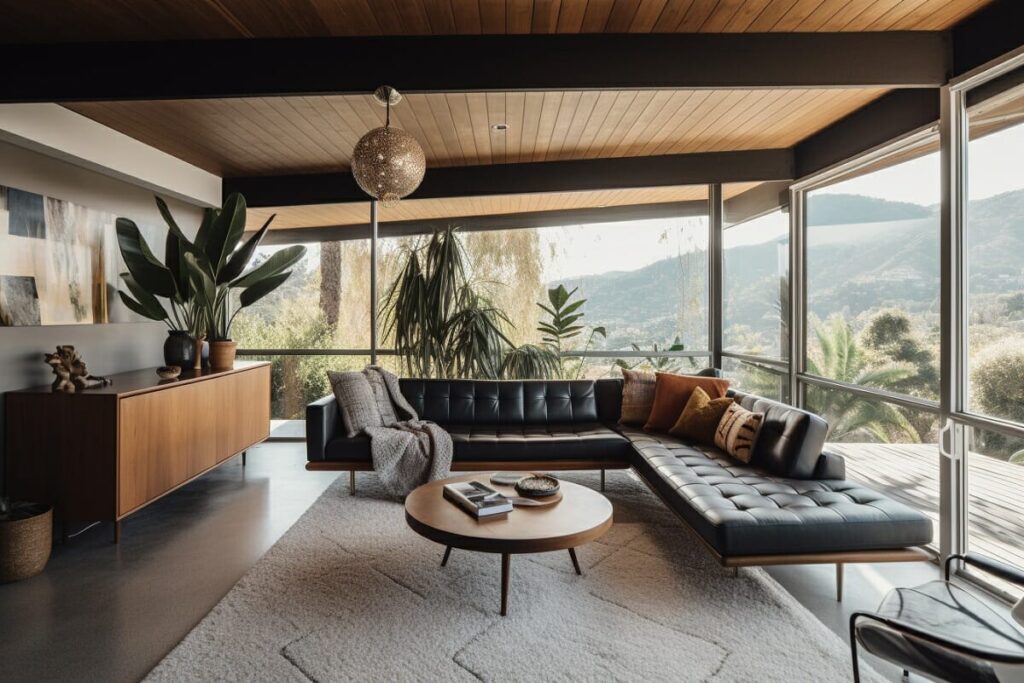
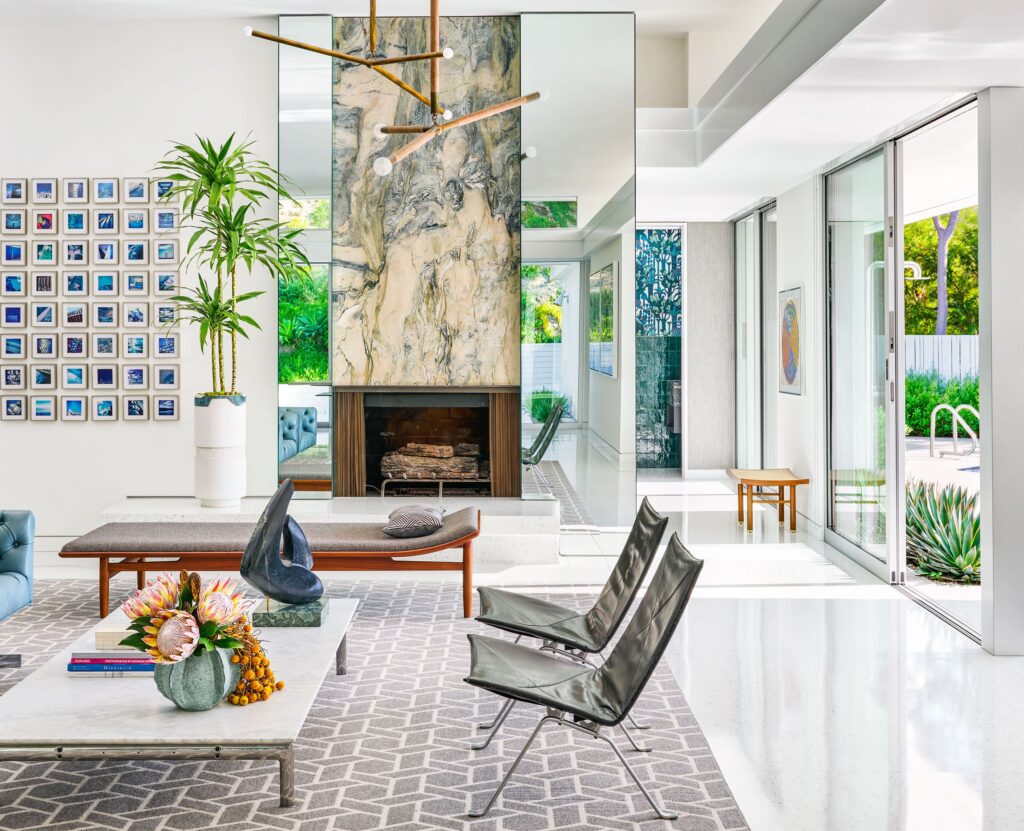
Midcentury Modern Architecture
Its architecture is defined by its commitment to elegant simplicity, functionality, and integration with the surrounding environment. Architects of the time sought to create homes and buildings that were in harmony with nature, blurring the distinction between indoor and outdoor spaces.
Integrated Design with the Surroundings:
One of the defining characteristics of Midcentury Modern architecture is its integration with the natural landscape. Sloping roofs, expansive windows, and open floor plans are common features that allow for a seamless transition between indoor and outdoor living spaces.
Architects such as Richard Neutra and Frank Lloyd Wright were pioneers of architecture, designing homes that were carefully positioned to take advantage of natural light and ventilation. Materials such as wood, stone, and glass were used to create structures that complemented their surroundings, rather than dominating them.
Technological Innovations and Materials:
Midcentury Modern architecture embraced the technological innovations of the time, incorporating new materials and construction techniques to create bold and innovative designs. Steel and concrete were often used in combination with large glass panels to create open and airy interiors.
The use of modular construction techniques allowed for greater flexibility in design, enabling architects to create homes that could be easily customized to meet the needs of their occupants. This pioneering approach to construction laid the groundwork for many of the sustainable building practices that are prevalent in contemporary architecture today.
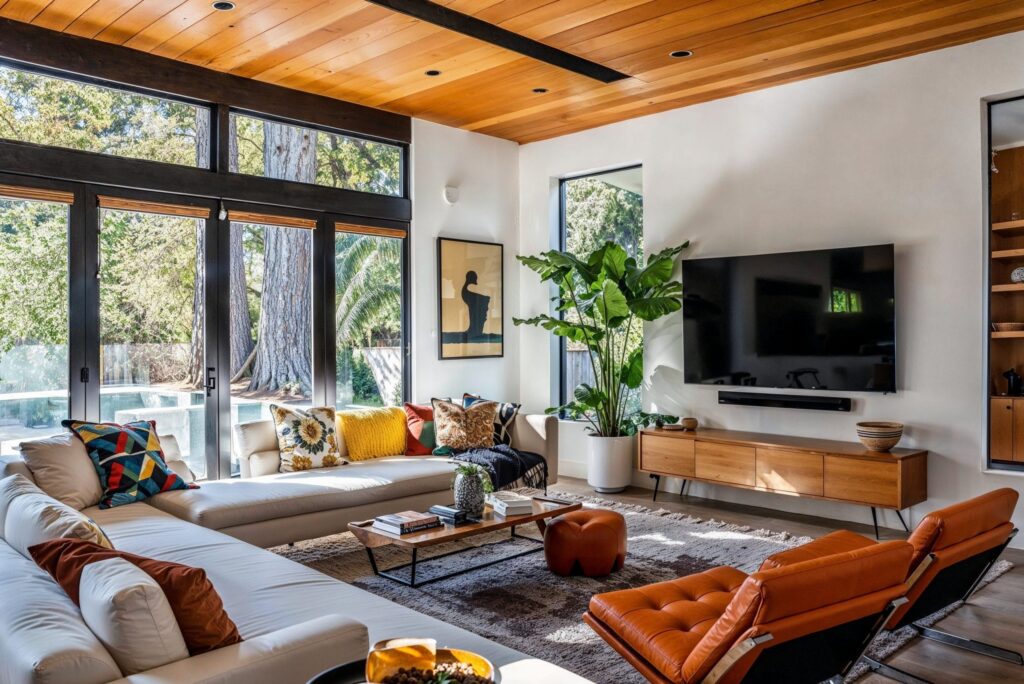
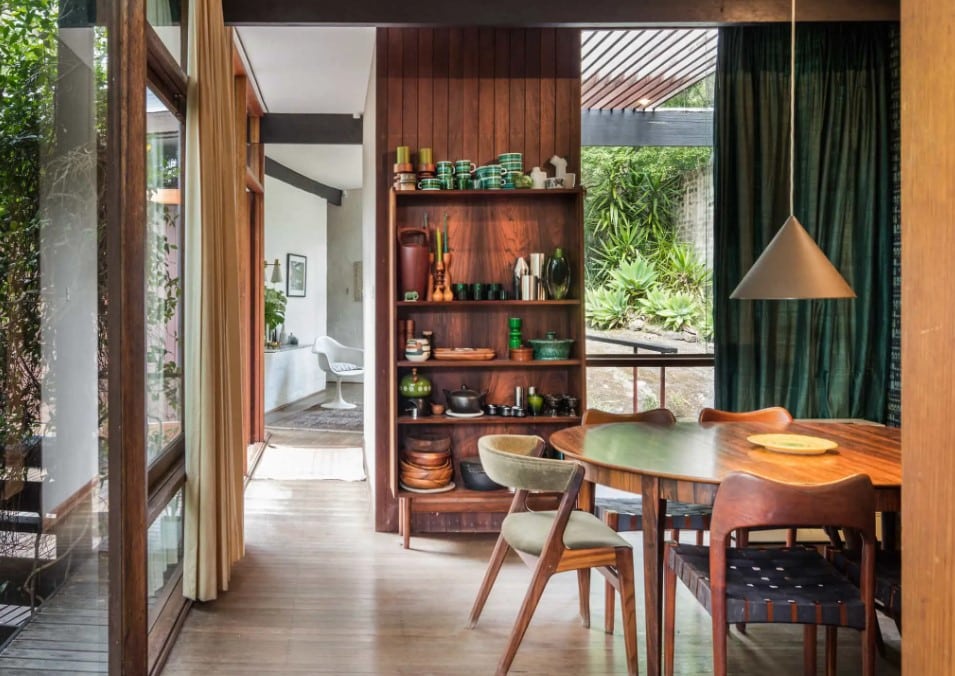
Legacy and Contemporary Influence
Despite reaching its peak in the 1950s and 1960s, the influence of this style continues to resonate in contemporary design and architecture. Its timeless appeal and emphasis on simplicity, functionality, and connectivity have ensured its enduring popularity among designers and homeowners alike.
Revival of Midcentury Modern Style:
In recent decades, there has been a resurgence of interest in the style, fueled by a growing appreciation for its timeless elegance and iconic designs. Vintage pieces from the era are highly sought after by collectors and design enthusiasts, commanding premium prices at auctions and antique markets.
In addition to the revival of vintage furniture and accessories, there has been a renewed interest in Midcentury Modern architecture, with homeowners seeking to recreate the clean lines and open spaces that define the style. Architects and designers continue to draw inspiration from this style principles, adapting them to meet the needs and tastes of contemporary living.
Influence on Pop Culture and Media:
The style has transcended its role in interior design and architecture, permeating popular culture in various forms. It has become a ubiquitous presence in movies, TV shows, and advertisements, serving as a visual shorthand for sophistication and modernity.
The iconic designs of Midcentury Modern furniture have been featured in countless films and television shows, becoming synonymous with a certain aspirational lifestyle. Additionally, Midcentury Modern homes have been featured in architectural magazines and design publications, showcasing their timeless appeal and enduring relevance.

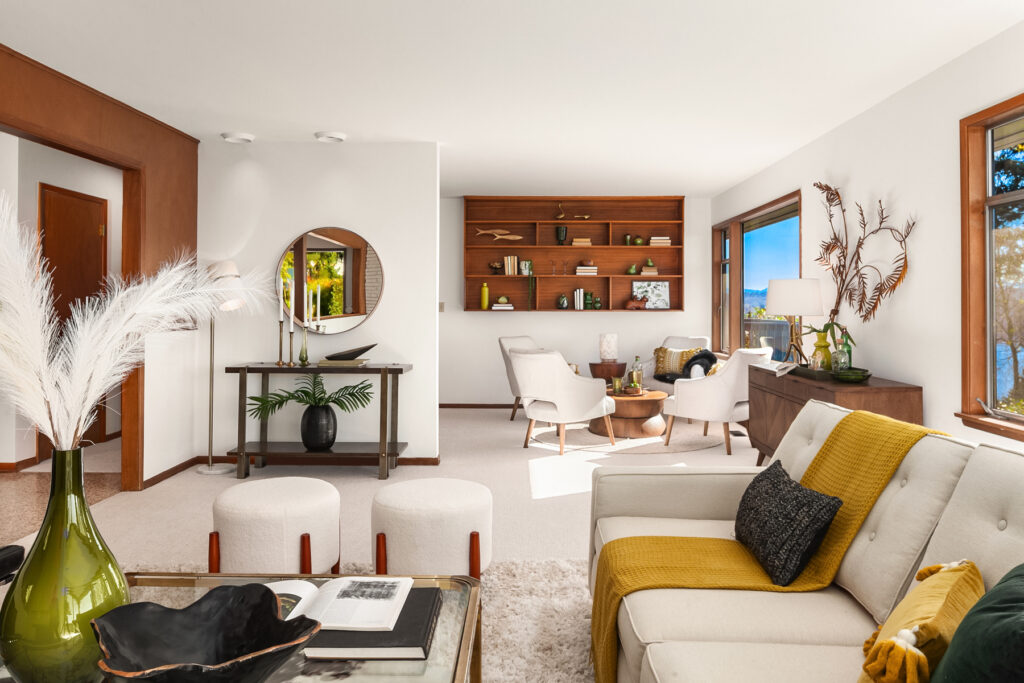
Midcentury Modern style remains a testament to the enduring power of simplicity, functionality, and timeless design. Its influence can be seen in the way we inhabit and experience spaces, from the iconic furniture designs to the architectural principles that continue to shape contemporary design. As we continue to evolve and innovate in the field of design and architecture, the legacy of Midcentury Modern style serves as a guiding light, reminding us of the importance of balance, harmony, and connection with the natural world.
Source: Pinterest
